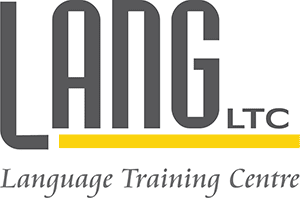IELTS General Training: Everything You Need to Know
Date of the last update: 01.06.2025
You are probably aware that IELTS (International English Language Testing System) is one of the most popular language exams in the world, assessing your language proficiency if you plan to study, work, or settle in countries where English is the dominant language. This system includes two main test variants: Academic and General Training. We will focus on the latter, IELTS General Training, which is particularly valuable for individuals planning to emigrate or seek employment in internationally operating companies.
Table of contents:
- Structure of the IELTS General Training Exam
- How to prepare effectively for IELTS General Training?
- Most common mistakes in IELTS General Training
- Summary
You can read this article in 5 minutes.
What Is IELTS General Training?
IELTS General Training assesses your language skills in everyday situations, both in everyday and professional life. This test is ideal if you:
- Plan to travel to English-speaking countries for work purposes.
- Need a work visa or a residence permit.
- Intend to enroll in vocational education programs.
Structure of the IELTS General Training Exam
The IELTS General Training exam consists of four main sections:
- Listening – lasts 30 minutes.
- Reading – you have 60 minutes.
- Writing – also takes 60 minutes.
- Speaking – a conversation with the examiner lasting 11–14 minutes.
Each of these sections has specific tasks and requirements.
Listening
In this part of the exam, you must listen to four recordings presenting different communicative situations, such as conversations between two people or lectures. After each recording, your task is to answer questions about the information you heard. It is crucial to pay attention to details and the context of the statements.
Reading
This section contains texts from various sources, such as newspapers, advertisements, and instructions. You must answer 40 questions that test different aspects of text comprehension, including general understanding, identification of specific information, and comprehension of details.
Writing
The IELTS General Training writing section consists of two tasks:
- Task 1 – write a letter (at least 150 words) responding to a request for information or explaining a situation.
- Task 2 – write an essay (at least 250 words) on a provided topic. The essay topics may cover a variety of social or personal issues.
Your responses should be written in a semi-formal style with clear language.
Speaking
This part of the exam is a direct conversation with the examiner, divided into three segments:
- The examiner asks you general questions about your life.
- You get one minute to prepare a response on a given topic and then speak for two minutes.
- The examiner asks follow-up questions related to the topic from Part 2, allowing for a more in-depth discussion.
How to prepare effectively for IELTS General Training?
To prepare well for IELTS General Training, you need a systematic approach and a solid study plan. Here are some proven tips:
- Understand the exam format – knowing the test structure will help you prepare better for each section. It is important to know how each part is assessed so you can focus on key elements.
- Practice test questions – regularly solving sample tests and exercises will boost your confidence and refine your skills.
- Use educational materials – utilize various study resources to expand your vocabulary related to everyday life and work.
- Join courses or study groups – consider taking online courses or joining study group to exchange experiences and learn from others.
Most common mistakes in IELTS General Training
During the exam, mistakes are easy to make. Candidates often commit certain common errors. Being aware of these common mistakes is crucial for effective preparation. What mistakes should you be aware of, and how can you avoid them?
- Misunderstanding instructions – make sure you fully understand the instructions in each part of the exam. If you don’t, it can lead to incorrect answers. Pay attention to details, such as the required word count in responses.
- Repetitive vocabulary and phrases – avoid using the same words and phrases repeatedly in your responses. Try to expand your vocabulary and use synonyms and varied sentence structures.
- Grammar mistakes – focus on using correct grammar structures. Regularly practice grammar to minimize errors.
- Superficial approach to topics – in the writing section, avoid providing shallow explanations. The exam requires critical thinking and argumentation skills, so develop your ideas and support them with concrete examples.
- Ignoring exam techniques – use effective reading and listening techniques, such as skimming (quickly scanning a text) and scanning (searching for specific information).These strategies can significantly improve your performance in the Reading and Listening sections.
- Insufficient preparation for the Speaking section – do not memorize prepared answers for the Speaking section. Examiners can recognize this and may lower your score. Instead, focus on learning topic-related vocabulary and practicing natural conversation.
- Time management – learn to manage your time effectively during the exam. Do not spend too much time on a single question or task to ensure you complete all parts of the test.
- Misunderstanding questions – make sure you understand the questions asked by the examiner in the Speaking part. Learn useful phrases to ask for clarification or request a question to be repeated.
Summary
IELTS General Training is often a crucial exam for individuals planning to live in English-speaking countries. With proper preparation, you can achieve a satisfactory score that will open doors to many professional and educational opportunities. Remember that your success depends not only on your English proficiency, but also on your preparation strategies and practice.


